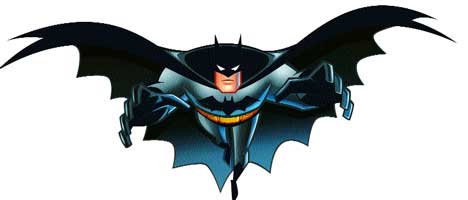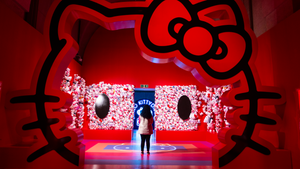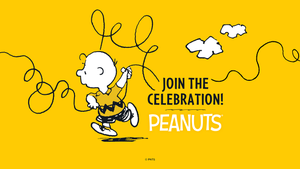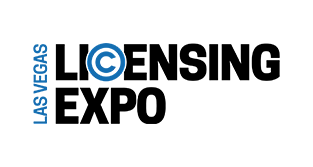Super Market
]> Overzealous speculators, lackluster editorial, and an aging audience affected the comic book industry like Kryptonite, weakening its foundation and leading to a downward spiral th
April 6, 2018

]>


Overzealous speculators, lackluster editorial, and an aging audience affected the comic book industry like Kryptonite, weakening its foundation and leading to a downward spiral that would spawn nearly a decade-long recovery.
At its high point in 1993, the industry commanded sales of $800 million and a retail network of 10,000 strong. Over the next eight years, sales shrank by approximately 73 percent and retail attrition reduced support to about 3,000 specialty and comic book retailers.
The speculator market once so optimistic about the value of comic books and related merchandise turned its back on the industry and scaled back purchases, leading to the demise of many retailers and distributorships.
"There was a speculative bubble, and people were buying crates of single comics as an investment. When that bubble popped, lots of retailers went under," observes Paul Levitz, president and publisher of DC Comics.
Battered but by no means defeated, the cyclical industry has steadily rebounded over the last 24 months, with sales rising about 12 percent last year and projected to reach $350 million to $400 million by year-end. Reader-ship is returning to acceptable levels, with 50 million unduplicated comic book readers in the U.S. purchasing 7 million to 8 million comics a month.
"Comics are cyclical, and at some point people want to feel paper," says Michael Martens, vice president of marketing at Milwaukie, OR-based Dark Horse. "Computers will go so far; people want to read comic books on the bus."
Capturing the attention of comic fans are market leaders New York-based Marvel Enterprises and DC Comics, along with strong smaller publishers such as Dark Horse; CrossGen Comics in Tampa, FL; and Image Comics in Orange, CA, rounding out a competitive marketplace.
Comic Competition
Marvel, which successfully pulled itself out of the trenches with sales gains of about 20 percent in 2001 and a 350 percent improvement in its stock price in the last year. Dynamic leadership combined with editorial improvements and aggressive marketing has the company undergoing a transformation akin to that of The Incredible Hulk. "What really helped us is a high awareness level for all of our TV and movie characters that have been or will be released over the next 15 months," says Russell Brown, executive vice president, consumer products, promotions, and media at Marvel Enterprises.
Going forward, Brown says, the company will put greater focus on raising consumer awareness of characters such as Daredevil and Hulk with significant licensing and marketing programs long before they grace the silver screen. The company also has battled to win back readers and entice younger fans with Ultimate Marvel, while also satisfying its mature readers with The Max line and Japanese anime fans with its newest incarnation, The Marvel Mangaverse. Its trade paperbacks also have found a loyal and growing audience and are supported by the book trade.
Marvel nemesis DC Comics likewise has been in a growth mode since the Batman movie made comic book history in 1989. Over the last decade, the company also has experienced gains in graphic novel publishing by repackaging periodical comics as graphic novels and offering creators the chance to create original material. Also strong is its licensing business, as well as double-digit sales growth in bookstores. "The nature of our business is to have some of the great classic properties that can be reborn for each new generation like we are doing with Smallville," says Levitz.
Most notably, the company's "Dark Knight Strikes Again" (by Frank Miller) was the No. 1 comic book in sales and volume in 2001. The company also continues to build on important icons such as Batman, Superman, and Wonder Woman through retail promotions for Mother's Day and Father's Day, an upcoming QSR with Subway in May, and exclusive Batman products at Toys "R" Us.
Comic book-turned-TV show Justice League debuted on Cartoon Network in November 2001 and has attracted the attention of at least eight licensees. These include: Midway Games in Chicago for a Game Boy Advance title; Changes in Queens, NY, for fashion tops; Rubie's, Richmond Hill, NY, for costumes; Spectra Star in Los Angeles, CA, for kites; Toy Works in Los Angeles for soft amusement toys; and Rinco in Johnston, RI, for hard amusement toys. Products will ship in fall '02.
Making Inroads
Smaller companies such as Dark Horse Comics use a diverse mix of publishing titles such as "Scorpion King," "Buffy the Vampire Slayer," and "Star Wars" and a comprehensive licensing program to remain on solid footing. Over the last two years, licensing revenues have grown by 100 percent and include more than 200 products for "The Simpsons," "Futurama," and "Buffy" with items such as air fresheners, tin lunch boxes, action figures, PVC sets, and apparel. Dark Horse last month announced an agreement to act as exclusive sales agent for Gentle Giant's upcoming program of licensed Star Wars mini-busts.
In publishing, a bright spot for 2001 was "Lone Wolf and Cub," a 28-volume series that sold more than 50,000 copies. For 2002, its focus will be on 23 volumes of "Astro Boy" acquired from Tezuka in Japan that shipped in April. Sony purchased the rights to "Astro Boy" and is working on an animated feature film for future release. Also important is a monthly Kiss comic book from licensor Gene Simmons that will hit July 2002. "We are a pop culture house that has more than 100 active licenses in licensing, publishing, sublicensing, and custom licensing," says Anita Nelson, vice president of sales and licensing at Dark Horse Comics. "We have had success working with companies such as Disney and are anxious to work with other youth-oriented licensors to get kids' books into the mass market."
Described as a "brash upstart publisher," CrossGen Comics is the brainchild of retired millionaire Mark Alessi. Two-and-a-half years later, the company sells nearly 250,000 to 300,000 comics a month and experienced a 144 percent rise in sales in 2001.
CrossGen doesn't publish superhero comics but those based on heroic fiction with fantasy, mystery, and science fiction stories in series such as "Sojourn," "Meridian," "Ruse," and "Scion," and for "more mainstream tastes," says Director of Corporate Communications Ian Feller. Hitting the book trade were "Forge" (April 10) and "Edge" (April 24), two monthly full-color compendia anthologies with at least five ongoing stories that comprise at least eight comics. Each will retail for $9.95 for a limited time and $11.95 thereafter.
"We've had so much success because the average comic book reader (in the mid- to late-20s bracket) was fed up with sexuality and violence and wanted to read the kind of comics they remembered from their youth," says Feller.
Image Comics didn't follow the traditional business model when starting its business 10 years ago. Unlike the major publishers, all of its books are creator owned. "Our philosophy is that a creator should profit from his or her own creation, and to a creator, that becomes the Holy Grail," says Jim Valentino, vice president and publisher.
Driving its business have been popular titles such as "Powers," "G.I. Joe," "Spawn," "Rising Stars," and "Tomb Raider"; successful distribution in the book and libraries trades; and good results with trade paperbacks for a more mature and wider demographic.
Custom Comics
DC Comics' successful custom publishing business has tripled over the last four years and is used by corporations, retailers, and service organizations to tailor a message to their specific customers. "Companies can communicate a message using great characters in a medium kids and adults will read over and over again," says Joel Ehrlich, senior vice president, advertising and promotions, for DC Comics and Warner Bros.
For the United Postal Service, that meant using Batman, Superman, Wonder Woman, and others in its Celebrate the Century series of 10 comic books (each to match a decade of history) with a circulation of 14 million in 1999. Most recently, the company worked with Con Edison on an energy conservation comic book. Next up: a comic based on Lego's new property Galidor: Defenders of the Outer Dimension. DC currently works with Lego on a Bionicle comic that is packaged with Lego Magazine.
Dark Horse is also heavily into custom publishing and has done successful projects for Monsters Inc., Star Wars, and comics that were given out at movie theaters for Planet of the Apes. "Custom publishing gives us exposure outside the comic book industry," Nelson explains. "For us to do more than 2 million comic books for Planet of the Apes and another 200,000+ for Monsters Inc. gets our product into little kids' hands and expands the Dark Horse line."
Cyber Comics
Fans are not only following comics in words, pictures, and panels but accessing them online. For CrossGen, a recent deal with Lycos and a portal on teen site Youtopia.com gives its comicsontheweb.com site much greater reach to existing and potential fans. Launched in February, the site will have 3,000 pages of story and art by year-end and some 20,000 pages of story and art by the end of '05.
Marvel.com gets 1.5 million hits a month and is more of a place to support and build readership than an e-store. "Our goal is to get people to look at dot-comics and comic book trailers because anyone who will wait 10 minutes for a download is a true reader," says Brown. "There is no loss of off-line publishing because they keep the comic book; it is a collectible, and they don't want to mar the value."
The retail environment likewise is changing significantly for comic books, with approximately 70 percent of sales of new comics sold at comic book stores and online specialty stores. The balance of distribution is conducted at bookstores, newsstands, libraries, and non-traditional channels such as Tower Records and Hot Topic.
A leader in online retailing is Mile High Comics (milehighcomics.com) in Denver, with 75 percent of its sales garnered online from 192,000 unique visitors and 12 million hits per month on its site. Of particular interest is Spider-Man, with one consumer ordering 35 Spider-Man comic books with a price tag of $11,000, reveals Founder and President Chuck Rozanski. He believes comics will bloom on the Internet because "even the smallest books have chat rooms where fans and collectors can share their views and excitement about what is going on in any given comic book."
As for brick-and-mortar stores, retailers have welcomed the opportunity to partner with comic book companies on special events and in-store promotions. In February, DC Comics and Lego hosted an event at Toys "R" Us' flagship store in Times Square, where DC artists and editors signed copies of "Bionicle" comics and spoke with fans.
"We are seeing retailers who know how to merchandise and can train employees on good customer service," says Michael Martens, vice president, marketing, Dark Horse. "Plus, more books aimed at women are bringing them into stores and legitimizing the industry."
Hot Stuff
Whether it's imitation, admiration, or inspiration, comic book merchandise is flying off the shelves.
Jerry Leigh in Van Nuys, CA, is extending its reach beyond juniors to 'tweens sizes 7 to 16 for the first time, with retailers such as Limited Too placing a large reorder for Superman/Supergirl. Its core juniors' line continues to do well at mid-tier, specialty, and department stores.
"We see no sign of slowing from buyers or consumers," says Andrea Green, director of marketing and licensing at Jerry Leigh.
In kids, New York-based Haddad recently took on licenses from Marvel and DC Comics. Back-to-school will mark the debut of Spider-Man and Spider-Man & Friends (Marvel) and Batman (DC Comics) for children's apparel. The company will ship T-shirts, separates, urban for kids, outerwear, and swimwear for both licenses. Daredevil and X-Men (Marvel) merchandise will be on shelf in '03.
"We feel we have a vision of what we can bring to this category for retailers in all channels of distribution," says Sam Haddad, principal at Haddad.
Brown Shoes is transitioning last year's classic Spider-Man designs to the movie art with sport and beach sandals and sneakers shipping to all channels in mid-March and April. Each retailer, says Marci Ranger, director of children's marketing, will get an exclusive pattern. Payless Shoe Source also gave consumers a free Spider-Man clip watch with every purchase in March. Brown Shoe also will support X-Men and The Incredible Hulk in spring 2003.
For older fans, Ecko Unlimited in South River, NJ, brought its funky styling to men's with a spring line featuring Spider-Man-inspired velour suits, jean jackets with denim pants, bandanas, sun visors, gloves, and wristbands for mid-tier and department stores. The company's focus will shift to Ironman for fall 2002.
Licensees in categories other than apparel likewise have created lines for fans' favorite characters. Comic Images in Saddle Brook, NJ, began shipping mini-bobble clip-ons featuring Spider-Man and Wolverine in mid-April. The company also will ship a line of Spider-Man and Wolverine coin banks ($9.99) to specialty stores in spring, with distribution to widen to the mass market for fourth quarter. Others such as Hulk, Captain America, and other X-Men will follow in the near future, says Comic Images President Alan Gordon.
F.A.B. in New York will make a back-to-school push with Superman- and Supergirl-inspired binders, social stationery, agendas, diaries, and room accessories. Says Polina Dektar, director, marketing and licensing, at F.A.B., "Supergirl has really been embraced by 'tweens because it empowers them and makes them feel older and cooler."
You May Also Like






